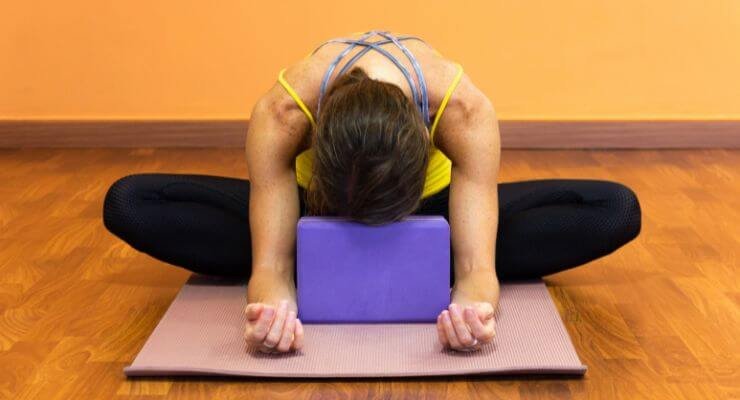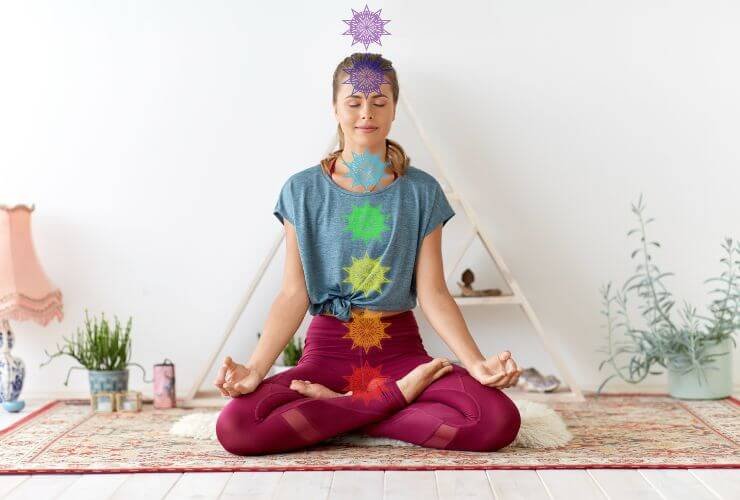I. Introduction
Yin Yoga, a practice characterized by its slow-paced and meditative nature, has its roots in the ancient philosophies of Taoism and Traditional Chinese Medicine. Unlike its more dynamic counterparts, Yin Yoga focuses on deep stretching by targeting the connective tissues of the body such as ligaments, tendons, and fascia. This introductory section will explore the unique benefits Yin Yoga offers, particularly in achieving profound flexibility and mental tranquility.
Yin Yoga’s efficacy in deep stretching is not just a matter of anecdotal evidence. Various studies and personal experiences underscore its ability to enhance flexibility, reduce stress, and promote a deeper sense of well-being. A case in point is the experience of a middle-aged individual who found significant relief from chronic back pain and improved range of motion through consistent Yin Yoga practice.
II. The Principles of Yin Yoga
At the heart of Yin Yoga are its core principles, which set it apart from other yoga styles. The primary principle is the practice of holding poses for extended periods, typically three to five minutes or even longer. This duration allows for a gentle and sustained stretch that reaches the deeper connective tissues.
Another key principle is the concept of finding stillness. Yin Yoga encourages practitioners to reach a point of stillness in each pose, both physically and mentally. This stillness is not about inactivity but about finding a calm, steady energy flow and a meditative state of mind.
Mindfulness and breathwork are integral to Yin Yoga. The practice encourages a deep focus on the present moment and an awareness of one’s breath. This mindfulness aspect is not just a physical exercise but a form of meditation, helping practitioners to cultivate a deeper connection with their bodies and minds.
III. Understanding Deep Stretching in Yin Yoga
Yin Yoga’s approach to deep stretching is unique. It targets the deeper layers of connective tissue, unlike more dynamic forms of yoga that focus on the muscles. By applying gentle stress to the connective tissues, Yin Yoga increases their strength and flexibility. This is crucial for overall joint health and mobility.
In Yin Yoga, the balance between effort and surrender is vital. While each pose requires some level of effort to maintain, there’s also a need to surrender and let the body relax into the stretch. This approach teaches practitioners to recognize and respect their bodies’ limits, promoting a healthy and sustainable practice.
IV. Key Yin Yoga Poses for Deep Stretching
Several key poses in Yin Yoga are particularly effective for deep stretching. For beginners, it’s important to approach these poses with care and use props like cushions or blocks for support.
- Butterfly Pose: Targeting the inner thighs and groin, this pose involves sitting with the soles of the feet together and knees spread apart. Leaning forward enhances the stretch, but it’s essential to move slowly and mindfully.
- Dragon Pose: Similar to a low lunge, this pose stretches the hip flexors and quadriceps of the front leg and the hamstrings of the back leg. Keeping the hands on the ground or on blocks helps maintain balance.
- Caterpillar Pose: A Yin version of the seated forward bend, this pose stretches the spine and the back of the legs. Allowing the back to round and the head to drop towards the knees can deepen the stretch.
- Sphinx Pose: Lying face down and propping the torso up on the elbows stretches the lower back and chest. This pose is excellent for stimulating the sacral-lumbar arch.
When practicing these poses, it’s crucial to remember that Yin Yoga is not about achieving the ‘perfect pose’ but about finding what works for your body.
V. The Mental and Emotional Benefits of Yin Yoga
Yin Yoga’s benefits extend beyond physical stretching; it’s also profoundly beneficial for mental and emotional health. By holding poses for longer periods, practitioners have the opportunity to observe their thoughts and emotions in a meditative state. This practice can lead to reduced stress levels, improved mental clarity, and a deeper sense of inner peace.
Many practitioners report significant emotional releases during or after a Yin Yoga session. The process of holding a pose and focusing on the breath allows suppressed emotions to surface and be released. This emotional release is not only cathartic but also essential for overall mental and emotional balance.
In conclusion, Yin Yoga offers a unique approach to deep stretching and mental well-being. Its principles of prolonged poses, mindfulness, and the balance between effort and surrender make it an invaluable practice for those seeking physical flexibility and mental tranquility.
VI. Incorporating Yin Yoga into Your Routine
Integrating Yin Yoga into your daily life requires understanding the nuances of this practice and recognizing how it complements other forms of exercise and daily activities. Yin Yoga can be practiced at any time of day, but its calming nature makes it particularly beneficial in the evening to ease into a restful state before sleep. However, a morning Yin session can also set a serene tone for the day.
When starting out, aim for shorter sessions – perhaps 20 to 30 minutes – and gradually increase the duration as your body becomes more accustomed to the poses and the practice. Ideally, incorporating Yin Yoga 2-3 times a week can offer significant benefits, but even once a week can be impactful.
The beauty of Yin Yoga is its accessibility. You don’t need a lot of space or special equipment; a quiet corner with a yoga mat and a few props like blocks or pillows is sufficient. Creating a serene environment can enhance the experience – consider dim lighting, soft music, or anything that helps you feel calm and centered.
VII. Addressing Common Myths and Misconceptions
Yin Yoga, like many practices, comes with its share of myths and misconceptions. One common myth is that Yin Yoga is easy or passive. While it is less dynamic than other forms, the challenge in Yin Yoga lies in maintaining poses and confronting the physical and mental discomfort that may arise.
Another misconception is that Yin Yoga is only for those who are already flexible. In reality, Yin Yoga is suitable for all levels of flexibility and can be particularly beneficial for those who feel they lack it. It’s about finding your edge and gently pushing beyond it, not about reaching a specific pose.
Safety is another area shrouded in misconceptions. It’s often believed that because of the deep stretching, Yin Yoga is risky or leads to injuries. However, when practiced mindfully and within one’s limits, Yin Yoga is quite safe. Understanding your body’s signals is key, and using props can provide support and ensure proper alignment.
VIII. Advanced Techniques and Variations
For those looking to deepen their Yin Yoga practice, exploring advanced techniques and pose variations can be rewarding. Advanced practitioners might hold poses for longer periods, sometimes up to 10 minutes, allowing for an even deeper stretch and mental challenge.
Integrating meditation and advanced breathwork into your practice can elevate it to a new level. Techniques like pranayama (breath control) can be combined with Yin poses to enhance focus and relaxation.
Advanced variations of poses can also offer a new dimension to your practice. For example, in the Dragon Pose, lifting the hands off the ground or adding a gentle twist can intensify the stretch. However, these variations should be approached with caution and always with a focus on listening to your body.
IX. Resources and Further Learning
Expanding your knowledge and practice of Yin Yoga can involve various resources. Books like “The Complete Guide to Yin Yoga” by Bernie Clark and “Insight Yoga” by Sarah Powers blend the practice with its philosophical roots. Online platforms like YogaGlo or Gaia offer a range of Yin Yoga classes for all levels.
Workshops, retreats, and teacher training courses can also deepen your understanding and practice. These are often led by experienced Yin Yoga practitioners and provide an immersive experience. Websites of renowned Yin Yoga teachers, like Paul Grilley or Sarah Powers, often list upcoming events and resources.
X. Conclusion
Yin Yoga is more than just a series of poses; it’s a journey into the depths of your physical and mental being. This practice offers a unique opportunity to explore the boundaries of your flexibility, endurance, and mindfulness. As you integrate Yin Yoga into your routine, you will likely notice a profound impact on your overall well-being, flexibility, and mental clarity.
Remember, the essence of Yin Yoga is not in perfecting the poses but in experiencing them. Each session is an opportunity to learn something new about your body and mind. It’s a practice that encourages patience, acceptance, and introspection. As you continue on your Yin Yoga journey, embrace each moment on the mat as a step towards deeper self-understanding and physical wellness.
Yin Yoga teaches us the power of stillness and strength in gentleness. It challenges us to slow down in a fast-paced world, to listen to our bodies, and to connect with our inner selves. This practice is a gift to yourself, a time to pause, reflect, and rejuvenate.
As you delve deeper into the world of Yin Yoga, keep an open mind and heart. Be willing to explore, experiment, and experience. Whether you’re a beginner just starting out or an experienced practitioner deepening your practice, Yin Yoga offers a path for growth, healing, and transformation.
If you’re looking for a truly transformative and authentic experience in your yoga teacher training, I highly recommend Nada Yoga School in Rishikesh, India. Located in the foothills of the Himalayas, Rishikesh is revered as the yoga capital of the world, and attracts thousands of spiritual seekers each year. Nada Yoga School offers a comprehensive 200-hour and 300-hour Yoga teacher training programs that combine traditional yogic philosophy, modern teaching methods, and personalized attention from experienced teachers. The curriculum includes asana practice, pranayama, meditation, anatomy, teaching methodology, and yogic philosophy. Additionally, Nada Yoga School offers opportunities for self-reflection, personal growth, and community service. The peaceful setting, warm hospitality, and the chance to immerse oneself in the authentic Indian culture make Nada Yoga School an excellent choice for those seeking an unforgettable yoga teacher training experience. Join Nada Yoga School in Rishikesh, India and embark on a transformative journey that will leave a lasting impact on your life and teaching. Click here to learn more about upcoming courses and workshops.





